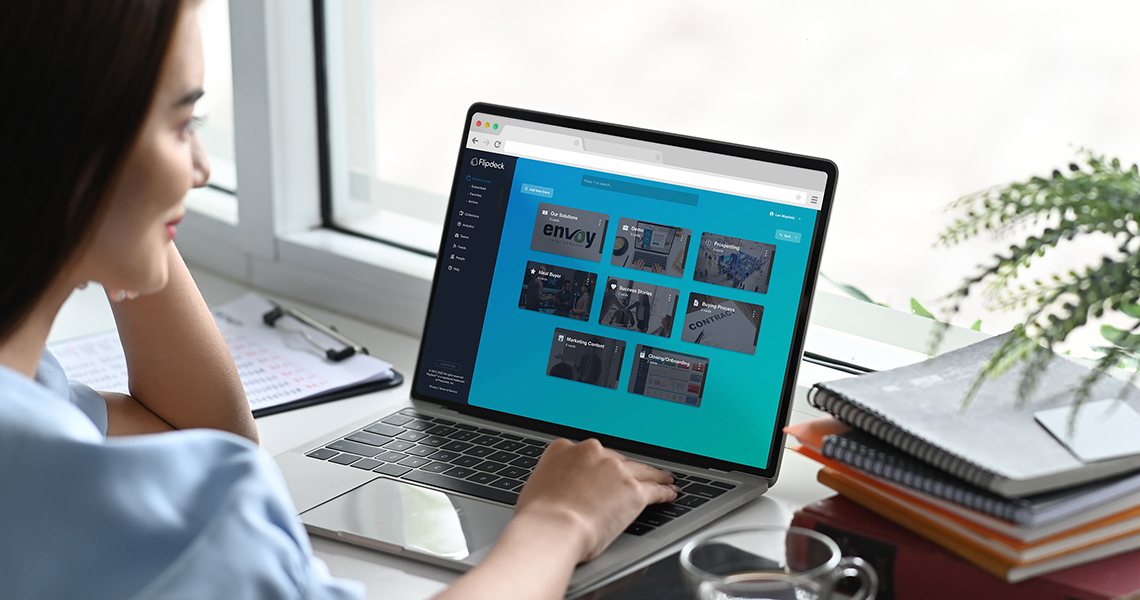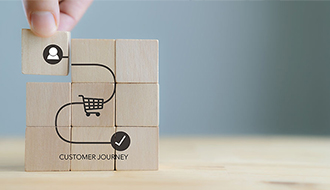Stop Wasting Money on Sales Content

Key Ideas
- Unused content wastes money
- 9 principles for effective sales content
- Bring your marketing and sales teams together
Did you know?
According to Forrester Research1, a company with $1 billion or more in annual sales revenue can waste around $1 million a year creating content that never sees the light of day, because sellers won’t use it. 62% of business buyers report that vendors give them too much content, and most say that what they get is useless.
Even if you’re not a $1B company, you get the idea — creating content that never gets used or is ineffective is a waste of money. It’s time to stop wasting money on sales content.
Check out these 9 guiding principles to ensure you’re providing your sales team with effective, usable content that can help them close more business.

9 Guiding Principles for Providing Sales with Effective Content
Ask yourself these questions to stay on target with Marketing content generation, give Sales resources they’ll actually use, impress customers, and reduce unnecessary costs.
#1: Is there a demand?
Are you creating more brochures... just because it’s what you’ve always done? It’s easy for Marketing to get caught up in “consistency spend.” Before turning the marketing machine on high, ask yourself if there is real demand — and validate with perspective from Sales. Think of the sales channel as your first customer. When salespeople feel heard and become “part owners” of the content strategy, they’re more likely to actually use the resources that Marketing provides.
#2: Who is this content for?
If Sales doesn’t think their customers will find a resource helpful, they won’t use it. Before you dive into the deep end of content creation, decide who you are selling to and make sure you’re able to connect your product/service value to their needs. Use language that potential buyers will understand and find relatable, not the jargon or shop talk you use with your colleagues. Customers might feel embarrassed if they don’t get your acronyms and ultimately look elsewhere. Clear language is always best.
#3: Is our content easily digested?
In a world where everyone is feeling overloaded, information with less friction and overhead stands out. Because we’re wired to quickly grasp information in picture or video form, slogging through unnecessary details can quickly turn people off. Sales wants to keep it simple, with room to personalize content for each customer’s needs. Ask yourself: Can the recipient look at the pictures, read the headlines, and get it? A “less is more” approach makes it easy for both Sales and customers to understand — and retain — the important stuff.

#4: What buyer journey stage(s) does this content support?
Are you looking to pique interest, nurture a buyer, prove your value claims, or facilitate closing? A single marketing asset probably can’t cover all buyer stages adequately, which means you’ll need stage-specific content — but doing everything as a one-off can get expensive. It’s more cost-effective to plan the content you’ll need to support the buyer journey all at once, with the ability to adapt and re-use when appropriate. This sets up Sales for success throughout the entire buyer journey, while also helping to keep costs in check.
#5: Is the purpose to provide broader context or specific details?
Make sure you distinguish your big picture story from core product info like data sheets and specs. Storytelling helps form an emotional connection to your audience, while core materials are detail-oriented and fact-driven. A value story that drags people kicking and screaming through slide after slide after slide can turn off customers with data overwhelm. Product-centric content that has too much story pumped into it can frustrate customers who are looking to dive deeper. Knowing whether customers need message simplicity or detailed specs — and providing those resources to Sales — can make a major impact in closing deals.
#6: Will this content be Sales-led or independently consumed?
Have you ever seen a salesperson try and take a customer through content that was intended to be read independently? It’s painful, and Sales likely won’t use the content again after that awkward experience. Similarly, if you post a presentation that assumes a conversation facilitated by a skilled salesperson, it will fall flat — and the prospect will click out. Content and formatting should align to whether it’s Sales-led or consumed independently by the customer. Know your buyers and their interest areas so you can speak to their concerns, and make sure you communicate to Sales which resources they should be presenting themselves.

#7: Are we settling for “one size fits all?”
It can be tempting for Marketing to adopt a “one size fits all” approach to cut back on costs, but Sales wants to add value with curated content that speaks to their customers’ interests, pain points, and goals. Falling back on “one size fits all” messaging at the finish line can undo the positive groundwork that got you there in the first place. A modular approach helps Marketing and Sales meet in the middle. Instead of generating overstuffed catch-all content in an attempt to please everyone, give Sales the ability to “mix and match” bite-sized content to create a personalized package for the customer.
#8: How is this content performing?
Marketing comes in hot with a bold change. Sales says it’s not working. How can you know for sure what’s actually going on? Content and user metrics provide essential insights and can help clarify where to invest your time and budget. When Marketing knows which content is being used, they can focus on generating what Sales actually needs. When Sales knows which content is performing well for them, they can better engage customers, move conversations toward the close, and help other reps replicate the success. Access to the right data builds confidence and lets the whole team do more of what’s working — so everyone wins.
#9: Is our content evergreen?
Ongoing content maintenance and a decent feedback loop can extend the life of your content investment by months or even years. When boxes of old printed brochures are out of date, they get thrown out. If digital formats are not maintained, they reach a tipping point where too many things are out of phase and Sales stops using the materials. Worst of all, customers can be misled by outdated information. Instead of throwing away money on unusable or outdated information, adopt an “evergreen” approach with a content playbook that’s easy to update and easy to navigate — so Sales can trust that they always have the latest and greatest information.
Bring Sales and Marketing together

These 9 guiding principles not only can go a long way in bridging the content gap between Sales and Marketing, they also inspired us to create a tool that makes it simple for sales channels, dealer networks, and marketing professionals to solve their content challenges — all in a single, easy-to-use platform.
Flipdeck was designed to directly address the market needs, gaps, and unnecessarily complex software we experienced firsthand when it came to organizing and sharing key information. As we listened to our customers, we heard the same challenges over and over again. Maybe you can relate?
- “Sales has trouble finding and using the content Marketing is creating — and delays are cooling buyer interest.”
- “Marketing thinks they know what works, but Sales doesn’t agree — so they’ve stopped using it.”
- “Existing software offers so much capability that it’s hard to use — plus it’s too expensive.”
We wanted to go in a simpler direction. Our cards & decks approach helps ensure that Sales can quickly find, personalize, and deliver the right content to your buyers at the right time. Best of all, you don't have to move the content from where it already lives — just link to it.
With Flipdeck:
- You’ll know which content is working, so you can stop wasting money and resources on what isn’t working.
- Sales won’t waste time searching through bloated server structures, cloud repositories, or old email attachments looking for what Marketing sent them.
- Sellers are easily notified of any updates / new additions and can be confident they have the latest content in hand to move buyers to the close.
- Customers can get the information they need in real time, lessening the chance of sales stalling out.
- Your product marketing team is free to do what they do best, instead of responding to endless content questions.
Ready to stop wasting money on unused sales content? Create a Flipdeck account and let the results speak for themselves.
1 The Forrester Wave™: Sales Enablement Automation Platforms (Sept. 2018)
Create an
account and try Flipdeck FREE, no credit card required.
Looking for more details? See examples or visit our support resources page.
Learn more about Flipdeck Accounts & Pricing Options.
Have questions? We're happy to help! Check out our Frequently Asked Questions or email us
at \u0069\u006e\u0066\u006f\u0040\u0066\u006c\u0069\u0070\u0064\u0065\u0063\u006b\u002e\u0063\u006f\u006d.